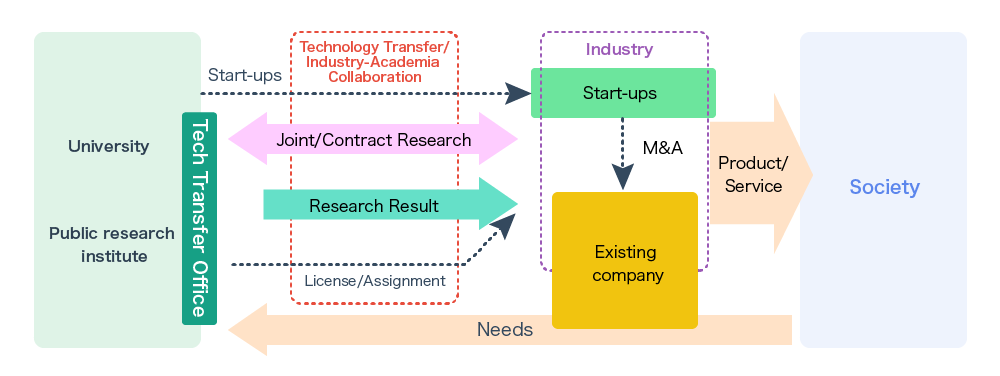There will be no time when new research achievements created by universities and public research institutes are expected as the origin of innovation as now. In Japan where the declining birthrate and the aging population have advanced fastest in the world, the university was imposed three missions under the amendment of Basic Act on Education in 2006.
Article 7 of amended Basic Act on Education states that “As a center of academic knowledge, universities cultivate high education and professional abilities, deeply explore the truth to create new knowledge and broaden these achievements to society widely. We will contribute to the development of society by providing them.” The Basic Act on Education was amended for the first time in 60 years since it was promulgated in 1947 right after the end of World War II. Before this amendment, the mission of university was firstly education, secondly research.
In addition to these two missions, “contribution to the society” became the third mission by the statement of “Contributing to the development of society by providing these sorts widely to society” in the amendment of Basic Act on Education.
How do we realize to provide or disseminate university’s research achievements to the society? Since university is an academia, it does not manufacture any products or make any service. Therefore, it is necessary (1) to collaborate with existing companies responsible for practical application and/or commercialization of research results of universities, (2) to make practical use of the research results through venture which researchers started up based on the research results of university. This work flow is technology transfer from universities and public research institutes to industries. Technology transfer has three patterns; first one is a license of intellectual property rights and/or know-how which are research achievements of university, second one is an assignment of IP from university to industry, and the third one is technology transfer through collaborative research and technical guidance. These three forms of tech transfer can be regarded as concrete embodiments of industry-university collaboration.







